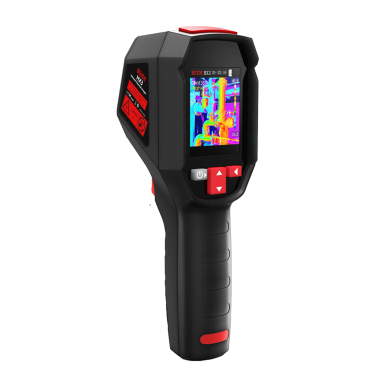
# Infrared Thermometer: Essential Tool for Non-Contact Temperature Measurement
## What Is an Infrared Thermometer?
An infrared thermometer is a device that measures temperature from a distance by detecting the infrared energy emitted by an object. Unlike traditional thermometers that require physical contact, infrared thermometers provide quick and accurate readings without touching the surface being measured.
## How Does an Infrared Thermometer Work?
Infrared thermometers operate on the principle of black body radiation. Every object emits infrared energy based on its temperature. The thermometer:
– Uses a lens to focus infrared light from the object onto a detector
– Converts the infrared energy into an electrical signal
– Processes the signal to determine the temperature
– Displays the reading on a digital screen
## Key Advantages of Infrared Thermometers
### Non-Contact Measurement
The most significant benefit is the ability to measure temperature without physical contact. This makes them ideal for:
– Measuring moving objects
– Checking temperatures in hazardous environments
– Maintaining hygiene in medical and food service applications
### Fast and Accurate Readings
Infrared thermometers provide instant results, typically within seconds. Modern models offer accuracy within ±1°C or ±1% of reading.
### Versatile Applications
These devices are used across various industries:
– Medical: Checking body temperature without contact
– Food service: Monitoring food and equipment temperatures
– HVAC: Diagnosing heating and cooling systems
– Automotive: Checking engine and brake temperatures
– Electrical: Identifying hot spots in wiring and components
## Choosing the Right Infrared Thermometer
When selecting an infrared thermometer, consider these factors:
### Distance-to-Spot Ratio
This ratio indicates how far you can be from the target while maintaining accuracy. A higher ratio allows for measurements from greater distances.
### Temperature Range
Ensure the thermometer covers the range needed for your applications, from sub-zero to extremely high temperatures.
### Emissivity Settings
Different materials emit infrared energy differently. Look for models with adjustable emissivity settings for more accurate readings on various surfaces.
### Additional Features
Consider extras like:
– Backlit displays for low-light conditions
– Data logging capabilities
– Laser targeting for precise measurement points
– Bluetooth connectivity for data transfer
## Proper Use of Infrared Thermometers
Keyword: infrared thermometer
To get the most accurate readings:
– Clean the lens regularly
– Allow the thermometer to acclimate to ambient temperature
– Hold the device steady during measurement
– Measure from the recommended distance
– Avoid measuring through glass or other transparent barriers
– Account for the emissivity of the material being measured
## Maintenance and Care
Proper maintenance ensures long-term accuracy:
– Store in a clean, dry place
– Avoid extreme temperatures when not in use
– Replace batteries promptly when low
– Clean with a soft, slightly damp cloth
– Avoid dropping or subjecting to strong impacts
Infrared thermometers have revolutionized temperature measurement across numerous fields. Their non-contact operation, speed, and versatility make them indispensable tools in both professional and personal settings. By understanding their operation and proper use, you can maximize their benefits for your specific needs.